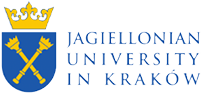Sources and Literature of Medieval Canon Law
This chapter provides an in-depth analysis of the development and usage of canonical legal sources from the twelfth to fifteenth centuries. It emphasizes their central role in shaping medieval ecclesiastical law, the evolution of the Corpus Iuris Canonici, and the scholarly methodologies employed to interpret and apply these sources.
Introduction
Eckert defines canon law as the body of norms governing the Church and its members, addressing various issues ranging from ecclesiastical institutions and sacraments to legal obligations and spiritual infractions. The author highlights the interplay between canon law and broader social, cultural, and political structures of medieval Latin society. The chapter focuses on scholarly legal production while excluding the broader normative and administrative activities of the Church, providing a thematic lens for understanding medieval canon law.
Les sources du droit canonique avant 1150 (Canonical Sources Before 1150)
The period 1000–1150 saw the emergence of important canonical collections, such as Burchard of Worms’ Decretum and Ivo of Chartres’ works (Decretum and Panormia). These collections are accessible online, along with analytical databases like Clavis canonum. Although foundational, these sources predate the significant methodological and structural innovations introduced by Gratian.
Le Décret de Gratien et les décrétistes (Gratian’s Decretum and the Decretists)
Gratian’s Decretum (circa 1140) marked a transformative moment in canon law, combining hundreds of authoritative texts from conciliar canons, papal letters, and Church Fathers. Its originality lay in its dialectical organization, structured as distinctions and questions, which resolved contradictions among sources to achieve concordance. Gratian’s methods influenced the subsequent scholarly tradition of the decretists, who extensively glossed and commented on his work.
Les collections de décrétales et les décrétalistes (Decretal Collections and the Decretalists)
The need to complement Gratian’s Decretum with contemporary papal decretals led to the creation of systematic collections, culminating in the Liber Extra of Gregory IX (1234). These collections formalized the papal legislative authority and standardized ecclesiastical legal norms. Subsequent collections, such as Boniface VIII’s Liber Sextus (1298) and the Clementines (1317), reflected the growing abstraction and systematization of canon law.
Manuscrits et éditions des décrétales (Manuscripts and Editions of Decretals)
Eckert examines the transmission of canonical texts through manuscripts and their evolution into printed editions. While many works remain accessible only in manuscript form, projects like the Monumenta Iuris Canonici series have advanced critical editions of key decretist and decretalist writings. Digital repositories have further facilitated access to canonical manuscripts and editions.
Les gloses et leur rôle (Glosses and Their Role)
Glosses played a pivotal role in interpreting canonical texts, evolving from basic explanations to complex commentaries integrated into manuscripts. The Ordinary Gloss by Johannes Teutonicus (early 13th century) synthesized earlier scholarship and became the definitive interpretive framework for canon law, influencing its teaching and practice throughout the Middle Ages.
Conclusion
The chapter highlights the critical importance of canonical sources in shaping medieval ecclesiastical law and their enduring influence on legal traditions. The systematic methodologies developed by canonists, from Gratian to later decretalists, reflect the intellectual rigor and adaptability of canon law in addressing the complex legal and theological challenges of the time.







